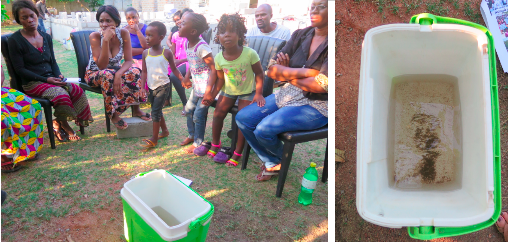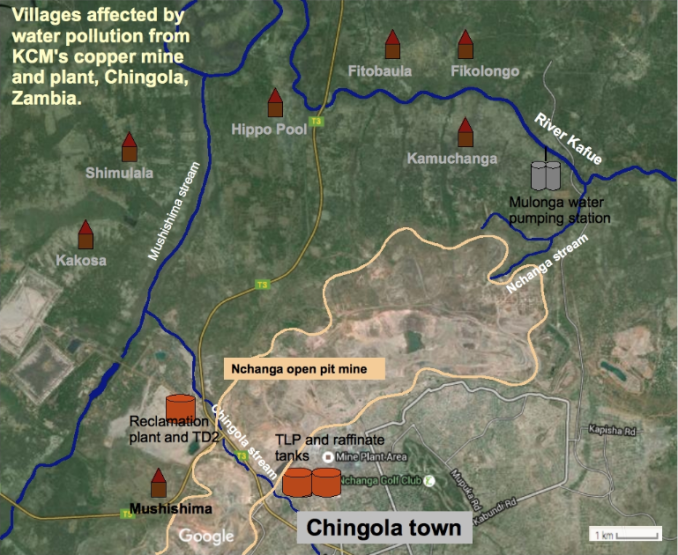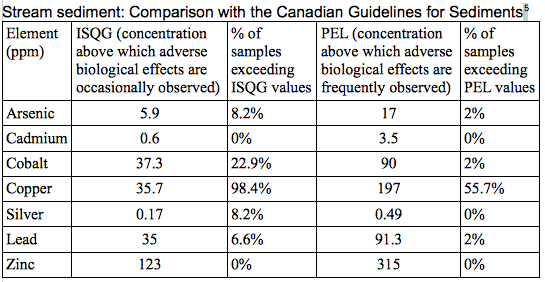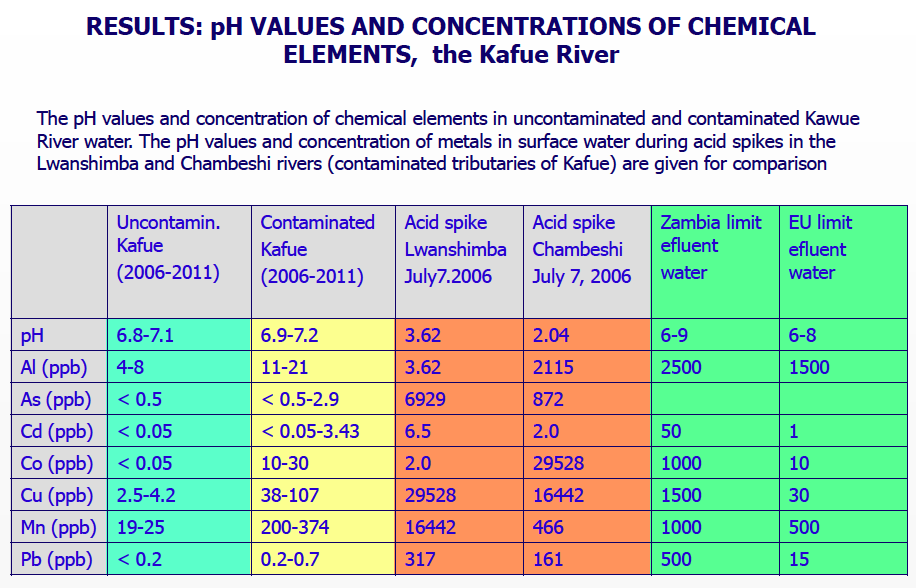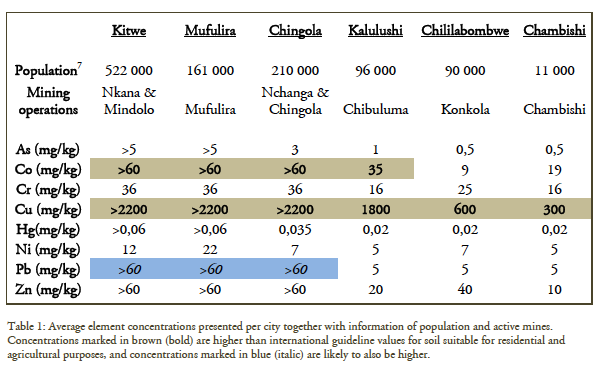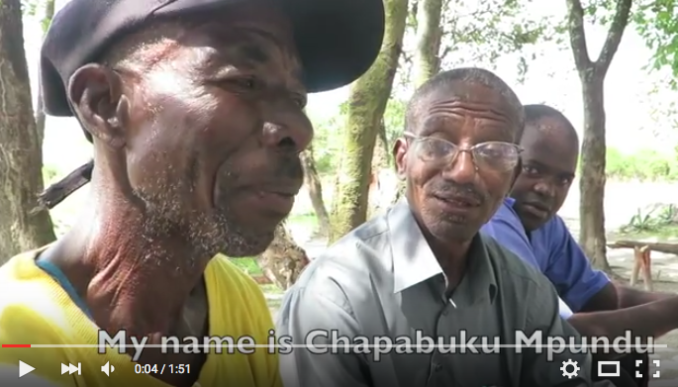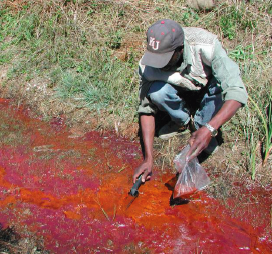
19th February 2016. In October 2015 Foil Vedanta visited Vedanta’s Zambian subsidiary Konkola Copper Mines (KCM) for the second time to investigate the legacy of pollution that has destroyed the environment and livelihoods around Chingola since 2004, when Vedanta bought controlling shares in KCM. KCM is Africa’s largest copper mine and the largest mining company in the copper dependent economy of Zambia. Our 2014 report Copper Colonialism: Vedanta KCM and the copper loot of Zambia exposed some of KCM’s major corporate malpractices including large scale tax evasion and mis-declaring profits, labour rights violations, and gross pollution which has continually contaminated the river Kafue causing sickness and loss of livelihood for tens of thousands of Zambians. We accused Vedanta and the UK government, which has given KCM active and tacit support, of neo-colonialism and of treating Zambian lives and environment as cheap.
In 2015 an eight year long legal battle by 2000 contaminated residents finally ended when the Supreme Court of Zambia confirmed the High Court’s opinion that KCM was guilty of ‘gross recklessness’ and damaging villagers’ health. However, the $2 million in damages earlier awarded by the High Court was removed, leaving the residents short of real justice. Subsequently London law firms have filed for damages from Vedanta Resources on behalf of approximately 3000 of the contaminated villagers, and the shocking story of ten years of pollution has reached the Guardian and BBC. However, many thousands remain un-represented and there is no guarantee that the pollution will stop in the event of a settlement. This article gives voice to some of the victims of KCM’s ongoing water pollution whom we met around Chingola, where KCM’s Nchanga open pit and underground mines, concentrators, Tailings Leach Plant, and smelter are located, and details KCM’s sheer disregard for life in Zambia despite several criminal prosecutions for contamination. KCM’s air pollution will be the subject of a separate article.
Gross negligence
KCM’s contamination of the river Kafue originates from various sources within the Chingola mine and smelter complex. We were taken to see several of these points by a group of former workers, who had been in long term employment at the plant before and after it was privatised to Anglo American in 2002, and sold to Vedanta Resources in 2004. They have been helping local people fight for compensation over the last ten years since the major pollution incident in 2006 for which KCM was found guilty of gross negligence in the Zambian Supreme Court in 2015.
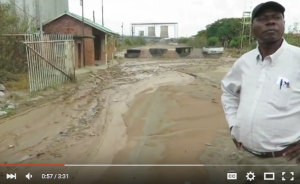 This video shows acidic material spilling over the raffinate tanks after it has been used to leach out copper in the Tailings Leach Plant (TLP), and flowing into the Chingola stream, after which it joins the Mushishima Stream and then the River Kafue which provides 40% of Zambians with drinking water. It also shows the failure of KCM to upkeep various pollution control mechanisms designed to prevent acidic material being released into the environment; there is no pH detector where there should be, and no stocks of lime to neutralise acid if it gets into the stream. According to the Guardian newspaper [a recent leaked report carried out for KCM by Canadian Engineering firm SNC-Lavalin refers to ‘constant contamination of streams’] with acid, solids and copper, and claims the main pollution control dam is often full to capacity and ineffective. Similarly a 2010 judgement in the Zambian High Court, following another major spill, found KCM guilty of four counts of illegally polluting the environment and willfully failing to report the incident. They ordered KCM to replace the 40 year old TLP tanks by September 2011, but to date this has not been done.
This video shows acidic material spilling over the raffinate tanks after it has been used to leach out copper in the Tailings Leach Plant (TLP), and flowing into the Chingola stream, after which it joins the Mushishima Stream and then the River Kafue which provides 40% of Zambians with drinking water. It also shows the failure of KCM to upkeep various pollution control mechanisms designed to prevent acidic material being released into the environment; there is no pH detector where there should be, and no stocks of lime to neutralise acid if it gets into the stream. According to the Guardian newspaper [a recent leaked report carried out for KCM by Canadian Engineering firm SNC-Lavalin refers to ‘constant contamination of streams’] with acid, solids and copper, and claims the main pollution control dam is often full to capacity and ineffective. Similarly a 2010 judgement in the Zambian High Court, following another major spill, found KCM guilty of four counts of illegally polluting the environment and willfully failing to report the incident. They ordered KCM to replace the 40 year old TLP tanks by September 2011, but to date this has not been done.
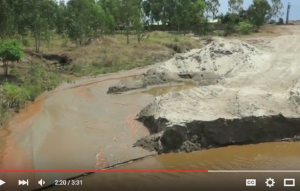
Further downstream we see more acidic waste and mica-rich sludges (largely from the refining of the Chingola Refractory Ores – old mining dumps which are being re-processed) being released into the Chingola Stream from the Reclamation Plant and Tailings Dam 2.
At KCM’s Concentrator an open drain takes toxic effluent into the Nchanga stream, which is also polluted with water flowing from Nchanga open pit mine dumps. Nchanga stream flows into the River Kafue just downstream of the water pumps used by the municipal water company Mulonga Water and Sewerage to provide 22,000 connections (or drinking water for an estimated 80,000 people) in Chingola town1. Mulonga Water have repeatedly had to shut off water for the town in recent years due to untreatable levels of pollution in the River Kafue. Residents in Chingola told us that the piped water often smells sulphuric and sometimes causes itching after washing. These Nchanga South residents showed us what comes out of their taps, and complained that they are scared of drinking the water. Workers also informed us that Mulonga processes water pumped out of KCM’s underground and open pit mines which contains high levels of copper, manganese, cobalt and other heavy metal toxins. The CEO of Mulonga Water refused to comment when contacted.
Disregard for life
Though the majority of Chingola town is affected when the piped water is contaminated, the most affected people are the villagers living alongside the contaminated streams and the river Kafue downstream of KCM’s plant. Unlike the townspeople who may have access to cleaner boreholes, these communities have no access to clean water as the groundwater is polluted over a wide area either side of the streams.
Hippo Pool village is located on the river Kafue, just below the confluence of the Mushishima stream. It is so called because Hippos used to frequent a deep pool near the village. Now the pool is surrounded by mica sludges from the mine which have built up along the riverbanks and make fishing and navigating the river more difficult. Villagers claim there are less hippos and crocodiles in the water as they have gone downstream in search of cleaner pools. Most of the residents are farmers and fishermen and depend on the river for water and food. Leo Chikopela, one of the villagers told us;
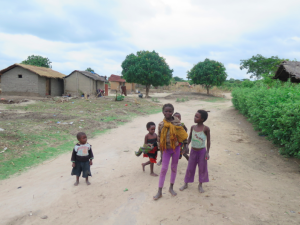
“We have no water source apart from the river and its totally polluted. Most of us are very weak and have constant stomach pains. When we bathe using this water our skin itches.”
He complained that KCM have only taken action after the two major pollution incidents in 2006 and 2010 for which they were criminally prosecuted and fined in Zambian courts.
“KCM dug boreholes in 2007/8 but when we tasted the water it was also acidic. Because of this the company came and destroyed the boreholes after testing them. We were not told the results of the water test but they came and destroyed the boreholes
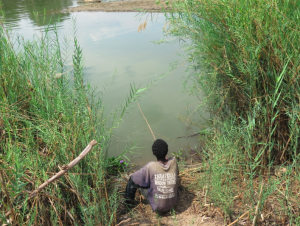
Beatrice Kasongo explained how the contamination affects mothers and children:
“There are some ailments occurring to women. Even children when bathed cry a lot unless lotion is applied on the body. We buy it when we can afford but when we can’t there’s nothing we can do.”
A 2005 report by Swedish and Zambian agencies calculated that 15,000 tons of suspended solids (silt) is added to the Kafue each year from the dewatering of what is now KCM’s Konkola mine in Chililabombwe, and a further 91,000 tons/year from tailings from the Nchanga mining area in Chingola which are discharged directly into the river.3 The silt settles on the riverbed and banks and contains highly elevated levels of metals such as arsenic, lead, copper, manganese and cobalt.
A 2011 geochemical study of pollution of the Kafue and it’s tributaries by Czech authors found that the Mushishima stream is the most polluted tributary of the Kafue, naming KCM’s operations as the source, and noting that the Lubengele, Nchanga and Mwambashi tributaries are also highly polluted by KCM’s operations at Chililabombwe and Chingola. The report measured copper concentrations of 8000 ppm in the sediments at Hippo Pool (compared to background copper in the uncontaminated upper reaches of the Kafue at 103 ppm) and cobalt concentrations of 329 ppm (compared to background cobalt of 10 ppm).4 Since there are no guidelines for freshwater sediment quality in Zambia, the article compared the data to Canadian guidelines, finding that the majority of sampling sites exceeded the upper limit for copper (197 ppm) expected to lead to ‘frequent adverse biological effects’. Arsenic, silver, cobalt and lead were also above the upper limits at various sites as the table below shows.
In normal conditions metal particles will mostly remain in stream sediments, but in the event of lowered pH in the river, due to an acid leakage or the rainy season leaching acidic rocks, the metal contaminants dissolve back into the water causing drastic spikes in contamination which can be ingested or absorbed into fish and crops. This table shows the effect of acid spikes on the availability of metal toxins in the river Kafue. 6
Mushishima stream: the most polluted river in the Copperbelt
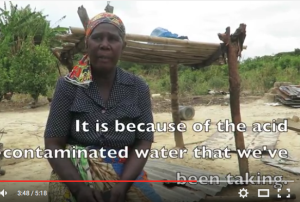 In Shimulala, on the banks of the Mushishima stream, farmer Judith Kapumba told us the shocking story of how contamination has destroyed their livelihood and their lives, claiming that many have ‘collapsed and died’ as a result of illnesses caused by drinking contaminated water, and that crops can no longer grow leading to starvation and extreme poverty.
In Shimulala, on the banks of the Mushishima stream, farmer Judith Kapumba told us the shocking story of how contamination has destroyed their livelihood and their lives, claiming that many have ‘collapsed and died’ as a result of illnesses caused by drinking contaminated water, and that crops can no longer grow leading to starvation and extreme poverty.
Irrigating crops with contaminated water stunts their growth and reduces yields, but contaminants also accumulate in vegetable and fruit crops, as well as fish. According to a study by the Czech Geological Survey in 2007, contamination particularly builds up in the leaves and even roots of cassava and sweet potato grown with contaminated water, while maize is less affected. The study recommends reducing cultivation and consumption of cassava and sweet potato in areas where arsenic (As) exceeds 5 mg/kg, copper (Cu) 200 mg/kg and lead (Pb) 4 mg/kg.7 This applies to much of the Copperbelt as the table below shows.8
As Judith explains, the village sought compensation for damage to crops following the 2006 pollution incident. In a letter to KCM in January 2007 the District Agricultural Coordinator acknowledges that the villagers have had no livelihood since 2005, when the pollution started, and that it may take five years to repair damage to the soil. In fact the soil has never recovered due to ongoing pollution and several major incidents. The Guardian newspaper cites a leaked letter from a KCM doctor stating that water collected from Shimulala boreholes in 2011 also contained high levels of copper, iron and acid which could cause cancer in the bloodstream and damage to internal organs if consumed. Unfortunately the villagers have no other option.
The 2011 Czech study notes that concentrations of copper, cobalt, manganese and sulfate in water (rather than sediment) in the Mushishima stream – from which Shimulala residents collect water – are all well above Zambian limits for effluent and waste water, let alone for drinking water. In June 2009 the scientists measured copper at 29,400 ug/l (compared to a Zambian limit of 1000 ug/l), cobalt at 5,824 ug/l (limit: 1500 ug/l), manganese at 33,980 ug/l (limit: 1000 ug/l), and sulfate at 1,850 mg/l (limit: 1500 mg/l) in the Mushishima stream.9
Possibly as a result of the community’s active quest for compensation and justice, Shimulala has been the focus of KCM’s Corporate Social Responsibility (CSR) activities in the villages. In 2012 and 2013 the company helped to add three classrooms to the primary school. In 2014 they gave approx 150 cattle to four cooperatives and three clubs, and when we visited they were helping with the cost of building a clinic, and reconstructing a bridge, where the previous one was damaged by acidic water and slurry. These projects are promoted widely in KCM’s and Vedanta’s reports, yet when we showed an article in KCM’s 2014 newsletter about the donated cattle, villagers were angry and claimed they had been misrepresented, and had not given the gushing statements of thanks as quoted.
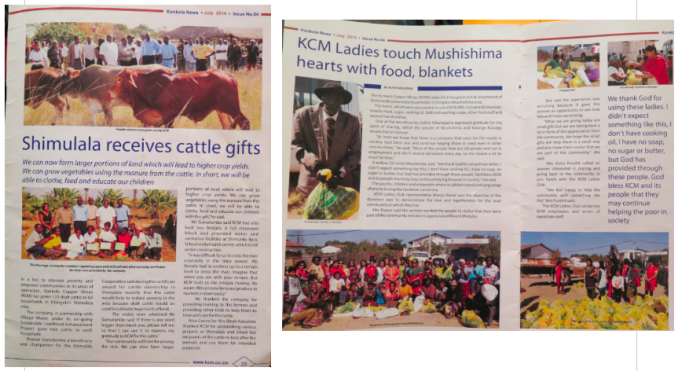
In Mushishima, the closest village to the source of contamination, we showed the village Chairman another of KCM’s CSR success stories describing how bags of food were donated to their village. Two people – widow Christine Mwaitenda and Collins Mkandawire – had been quoted saying “God bless KCM and its people that they may continue helping the poor in society” but the Chairman claimed he was sure that no such person lived in the village and no such quote had been given. Because the village also lies alongside the Nchanga open pit mine where underground water is pumped out, there is no groundwater, and even 90m wells drilled by KCM were dry. As a result the only source of water is the polluted Mushishima stream.
Long distance pollution
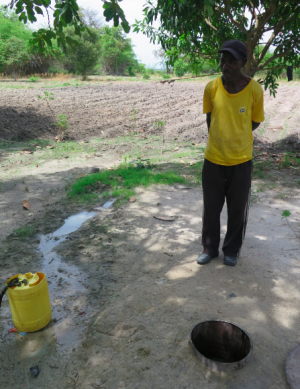
Kamuchanga, Fikolongo and Fitobaula are more than 20km by river from the source of the pollution at KCM’s plant. Yet these villages also experience high levels of contamination and are being represented in the ongoing London damages case against Vedanta. Kamuchanga headman Chapabuku Mpundu showed us his borehole, which is 1km away from the river but had recently been tested and found to be unsafe to drink. “We don’t have any other source of water so even if it is contaminated we have to drink it” he said. “We get stomach pains. Crops don’t grow so we add more fertiliser which costs us money we can’t afford. Crocodiles and hippos come out and into our farms when the water is contaminated, looking for clean water.” Chapabuku also claims many have died as a result of the contamination, especially as their village is very remote and far from a hospital. See the video here.
In Fikolongo, Secretary of the village committee Karupeni Kasonda claims the river has been badly polluted on multiple occasions. As well as the major incidents for which KCM were prosecuted in 2006 and 2010, he claims large numbers of dead fish were also found in the river in April 2012 and more recently in November 2014, with profound impacts on the health of the village:
“We drink from Kafue streams when we go to hunt or fish. Afterwards we are not feeling OK in our stomach. We can feel it in our body. We have different types of problems; some have skin sores, some have been paralysed. We feel weak, we can’t walk far, we feel pumping in our heart. We have so many diseases since KCM polluted our water with poison. We have been facing a lot of problems.”

On the South side of Chingola contaminated waste flows from the 12 km² Muntimpa tailings dam (which stores tailings from the TLP) into the Muntimpa stream, Kasompe swamp (or ‘dambo’) and the Mwambashi stream, which eventually flows into Kitwe town. In November 2013 the Mwambashi dam raw water intake and the Mwambashi Water Treatment Plant in Ganertone Township in Kitwe were shut down due to damage by contaminated water from the Muntimpa tailings dam. Local Government minister Emerine Kabanshi expressed a fear that Nkana Water and Sewerage Company may be forced to shut down Bulangililo Water Treatment Plant which supplies 60% of water for Kitwe, the second largest city in Zambia. The photo shows scientists collecting samples from material seeping from the Muntimpa tailing dam into the environment in 2011.11
The Guardian newspaper quotes a Zambian scientist who claims a disaster affecting hundreds of thousands of people, hundreds of miles away, where the Kafue joins the Zambezi is ‘very likely’. Elevated levels of sulfur, copper and cobalt from Copperbelt pollution were already detected at the confluence with the Zambezi in 200212. Similarly, in his 2010 High Court judgement Justice Siloka stated that ‘KCM should ensure that similar accidents are avoided because in future the accident may be so huge that no amount of money will ever be received to compensate the damage.’ Despite the current and potential impact on the Kafue and Zambezi river systems, the World Wildlife Fund (WWF) has approached KCM as a strategic partner for their River and Rowing Centre, promoting water stewardship on the lower Kafue, which provides 50% of Lusaka with drinking water.13
It is a shocking display of arrogance that despite several prosecutions by the Zambian justice system, Vedanta’s Konkola Copper Mines continues to pollute the river Kafue and its tributaries without remorse, failing to maintain or upgrade their pollution control equipment or compensate villagers for serious damage to their health and land. The villagers we spoke to claim that many people have died as a result of the last ten years of consistent pollution, which they are ingesting through fish, vegetables and drinking water daily. Serious criminal charges must be levelled against Vedanta in Zambia and the UK for their utter disregard for life and the environment, and the Zambian Government should be compensated for the liabilities they will leave behind, which may take decades to rehabilitate.
Footnotes:
1Interview with Mulonga Water CEO Kanyembo Ndhlovu, 8/02/16
2 Joanna Lindahl, 2014, ENVIRONMENTAL IMPACTS OF MINING IN ZAMBIA: Towards better environmental management and sustainable exploitation of mineral resources, Geological Survey of Sweden
3SGAB, SWECO, THOMRO and UNZA. 2005. Preparation of Phase 2 of a Consolidated Environmental Management Plan – Project Summary Report. ZCCM Investments Holdings, Copperbelt Environment Project.
4Ondra Sracek et al, 2011, ‘Mining-related contamination of surface water and sediments of the Kafue River
drainage system in the Copperbelt district, Zambia: An example of a high neutralization capacity system’, Journal of Geochemical Exploration, 112 (2012) 174–188.
5Adapted from: Bodhan Kribek et al, 2013, Methods of environmental monitoring in mining areas:
The Zambian Copperbelt Case Story, Presentation from a training course, delivered at University of the Witwatersrand, Johannesburg, July 13-15, 2013.
6Bodhan Kribek et al, 2013, Methods of environmental monitoring in mining areas:
The Zambian Copperbelt Case Story, Presentation from a training course, delivered at University of the Witwatersrand, Johannesburg, July 13-15, 2013.
7Czech Geological Survey. 2007. Environmental-geochemical Atlas of the Central-northern Part of the Copperbelt Province of Zambia. Project of the Development Cooperation Programme of the Czech Republic.
8 Joanna Lindahl, 2014, ENVIRONMENTAL IMPACTS OF MINING IN ZAMBIA: Towards better environmental management and sustainable exploitation of mineral resources, Geological Survey of Sweden
9Ondra Sracek et al, 2011, ‘Mining-related contamination of surface water and sediments of the Kafue River
drainage system in the Copperbelt district, Zambia: An example of a high neutralization capacity system’, Journal of Geochemical Exploration, 112 (2012) 174–188.
11Bodhan Kribek et al, 2013, Methods of environmental monitoring in mining areas:
The Zambian Copperbelt Case Story, Presentation from a training course, delivered at University of the Witwatersrand, Johannesburg, July 13-15, 2013.
12Pettersson U. 2002. A Geochemical Study of the Kafue River, Zambia. Lulea University of Technology, Doctoral thesis, 2002:46.
13Interview with Chanda Mwale and Daniel Phiri at WWF Lusaka , October 2015.
